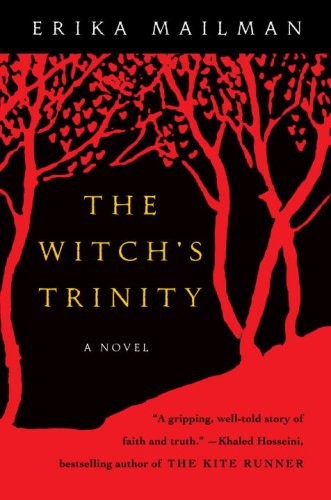
The Witch's Trinity
A Novel
کتاب های مرتبط
- اطلاعات
- نقد و بررسی
- دیدگاه کاربران
نقد و بررسی

May 21, 2007
Agrandmother's family turns against her in Mailman's uneven debut historical about witch trials in 16th-century Germany. The people of Tierkinddorf, on the brink of starvation following years of bad weather and poor crops, suspect a witch has cast a spell on them. Under the guidance of a visiting friar, the townspeople burn at the stake a local healer. When their luck does not improve, attention turns to the healer's longtime friend, Güde Müller, the novel's narrator and a widow who lives with her son, Jost; her daughter-in-law, Irmeltrud; and their two children. Güde has been recently tormented with visions of witches and of the devil disguised as her late husband, and is uncertain whether the apparitions are real. When Jost and the other village men strike out on a hunting expedition, Irmeltrud begins, in her husband's absence, a campaign to finger Güde as a witch. Mailman creates an intense atmosphere of hunger, fear and claustrophobic paranoia, though the secondary cast is flat and Güde's mental state doesn't always allow for lucid narration. Fans of supernatural fiction will want to give this a look.

June 1, 2007
Unrelentingly grim in tone, Mailman's debut novel, inspired by the experiences of a distant ancestor in 1600s Salem, is set in the "second year of no harvest, 1507, Tierkindorf, Germany." Aging and arthritic, Gü de Mü ller has become a burden on her family, at least according to her bitter daughter-in-law, Irmeltrud. Wondering if God has forsaken them, the starving villagers turn for help to a visiting friar, who tells them that according to the book "Malleus Maleficarum (The Witch's Hammer"), all their troubles are owing to witches in their midst. Gü de's lifelong friend, Kunne, becomes an instant target for the villagers' hate. But burning Kunne doesn't seem to help matters. When Gü de begins experiencing horrible visions, Irmeltrud is only too eager to accuse her of witchcraft. Gü de is certainly a pitiable figure, as she is starving, abused, and probably suffering from senile dementia. However, her story isn't particularly original, nor does Mailman bring a fresh perspective to the oft-told tale of witch burning. Not recommended. [See Prepub Alert, "LJ" 5/15/07; reading group guide available at CrownReads.com.Ed.]Laurel Bliss, San Diego State Univ. Lib.
Copyright 2007 Library Journal, LLC Used with permission.

July 1, 2007
No one escapes suspicion when a famine afflicts a medieval German village. Eager to identify a scapegoat, the starving residents of Tierkindorf fall under the spell of an itinerant friar claiming to be able to extract confessions of witchcraft from transgressors. When elderly Gude Muller begins to experience blackouts and confusing visions, her daughter-in-law Irmeltrude seizes the opportunity to rid herself of the burden of her husbands mother. In an ironic twist, the villagers turn not only on Gude but on Irmeltrude as well. In searingly simple prose, Mailman probes the human psyche, peeling back the layers of the basest human instincts to expose the dangerous frailties of the human soul.(Reprinted with permission of Booklist, copyright 2007, American Library Association.)

























دیدگاه کاربران